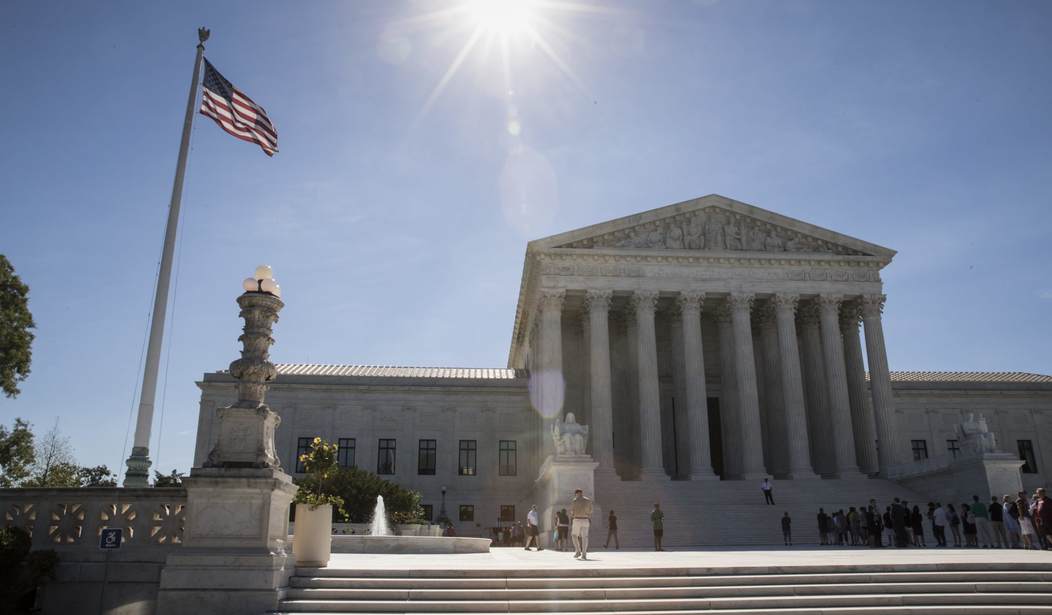WASHINGTON – In its decision to partially lift an injunction against President Trump’s travel ban, the Supreme Court empowered the administration to be as “restrictive as it can” in limiting Muslim entry in the U.S., a legal scholar said Thursday.
“I think the court would be much better off leaving the injunction in place,” Erwin Chemerinsky, professor at the University of California Irvine School of Law, said during a Supreme Court discussion hosted by the Anti-Defamation League. Chemerinsky agreed with Justice Clarence Thomas’ assessment that the high court, through its decision to partially lift the ban, is inviting arbitrary line-drawing.
“That’s what we’re already seeing,” Chemerinsky said.
The Supreme Court last month allowed a truncated version of Trump’s travel ban to proceed, while announcing that it will hear oral arguments in October. The decision dictates that travelers from six majority-Muslim countries must show ties to a person or entity in the U.S. to enter the country. Certain relatives, employers and schools are recognized as “bona fide” relationships. Additionally, separate guidelines allow the entry of certain refugees who are unable to return to their country of origin because of unrest or hardship.
Dahlia Lithwick, senior editor at Slate who appeared on Thursday’s panel, argued that the Supreme Court’s decision did not give either side, the administration or civil rights advocates, a decisive victory, though both sides have been claiming a win.
“You know it’s a deft compromise when both sides claim that they had an extraordinary win in this case,” Lithwick said.
The event included discussion about the lack of activity during this Supreme Court term, with Chemerinsky opining that the seated justices avoided taking cases over deeply divisive issues, like abortion, affirmative action, Second Amendment rights and the LGBT community.
The Supreme Court decided 57 cases this term, Chemerinsky noted. By comparison, the high court was averaging more than 160 cases a year in the 1980s, and for much of the 20th Century it decided around 200 cases a year, Chemerinsky said.
Panelists also touched on the appointment of Justice Neil Gorsuch, who replaced late Justice Antonin Scalia after a tumultuous nomination process in which Democrats staged a filibuster, claiming that the nominee gave lawmakers worrisome or overly vague responses. Senate Republicans invoked the “nuclear option,” allowing them to advance the nomination with 51 votes rather than 60.
Chemerinsky said that Gorsuch has shown he is, in some ways, more conservative than Scalia. Lithwick agreed, noting that the 49-year-old associate justice has sided with Thomas, placing Gorsuch to the right of Justice Samuel Alito and arguably further right than Scalia.
After President Obama’s March 2016 nomination of Merrick Garland to replace Scalia, Senate Republican leadership refused to hold confirmation hearings, vowing to let the American people decide the fate of the vacancy, prompting Democrats’ charges of obstruction. The vacancy was one of the deciding factors in the 2016 election. According to Lithwick, and based on exit polls, voters who held the Supreme Court vacancy as their No. 1 issue were twice as likely to vote for Trump than Democratic nominee Hillary Clinton.
“There was a profound enthusiasm gap in terms of how voters construed the vacancy on the court,” Lithwick said, adding that voters were more “willing to hold their noses” for Trump than Clinton. Polling showed Trump and Clinton were regarded as two of the most unpopular candidates to face off in a U.S. presidential election.









Join the conversation as a VIP Member